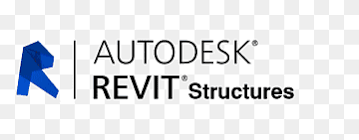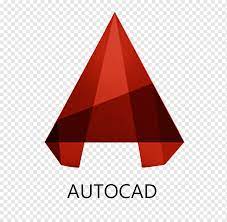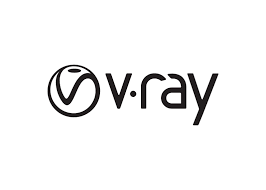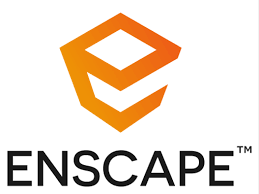Artificial Intelligence (AI) is revolutionizing the architecture industry by providing cutting-edge tools that enhance the design process and streamline the construction process. Architects are now able to leverage AI tools to create stunning designs that meet their clients' requirements while maximizing sustainability, efficiency, and cost-effectiveness. With the ever-growing demand for sustainable and eco-friendly architecture, architects who embrace AI tools can stay ahead of the curve and deliver exceptional designs that meet the needs of their clients and the environment.
This blog post will explore some of the best AI tools for architecture that are transforming the industry. From generative design and computational design to machine learning and data analysis, we'll dive into the most innovative tools that architects can use to optimize their design process and create sustainable structures. We'll also look at how these AI tools can help architects manage construction projects, provide real-time information on the progress of the project, and identify potential issues. If you're an architect looking to stay ahead of the curve and deliver exceptional designs, this post is for you.
ArchiCAD

ArchiCAD is a powerful and versatile Building Information Modeling (BIM) software that is widely used in the architecture industry. Developed by Graphisoft, ArchiCAD provides architects with a comprehensive set of tools and features for designing, visualizing, and documenting building projects. With ArchiCAD, architects can create detailed 3D models of buildings, generate accurate construction documentation, and collaborate seamlessly with engineers, contractors, and other stakeholders. ArchiCAD's intuitive interface and customizable workflows make it easy for architects of all skill levels to use and leverage its capabilities.
Pros
Cons
Overall Rank
SketchUp

SketchUp is a 3D modeling software that is widely used by professionals in various fields such as architecture, interior design, and engineering. What sets SketchUp apart from other 3D modeling software is its user-friendly interface and ease of use. With SketchUp, users can create 3D models quickly and efficiently using basic geometric shapes and tools. SketchUp also offers a large library of pre-made 3D models and plugins, making it easy to import and export files. Moreover, SketchUp provides a collaborative platform that allows users to share their work and collaborate on projects with other professionals, making it an ideal tool for team-based projects.
Pros
Cons
Overall Rank
Revit

Revit is a powerful building information modeling software that allows architects, engineers, and construction professionals to design and document buildings with accuracy and efficiency. With Revit, users can create detailed 3D models that include information on the structure, materials, and systems of a building. This information can then be used to produce construction documents, schedules, and cost estimates. Revit also includes collaboration tools that allow multiple users to work on the same project simultaneously, making it a valuable tool for large-scale projects with complex designs and construction requirements.
Pros
Cons
Overall Rank
AutoCAD Architecture

AutoCAD Architecture is a powerful software tool used by architects and engineers to create detailed 2D and 3D models of buildings and structures. With a vast array of features, including a customizable user interface, a comprehensive set of building design tools, and the ability to create realistic visualizations and animations, AutoCAD Architecture is an essential tool for any design professional. The software is designed to be user-friendly, with a range of intuitive tools that make it easy to create complex designs quickly and efficiently. Whether you are designing a new building from scratch or renovating an existing structure, AutoCAD Architecture is a valuable resource for any architectural project.
Pros
Cons
Overall Rank
Rhino 3D

Rhino 3D is a powerful computer-aided design (CAD) software that allows users to create, edit, analyze, and render 3D models with incredible precision. With its user-friendly interface and extensive toolset, Rhino 3D is widely used in industries such as architecture, industrial design, and product development. The software supports various file formats, making it easy to import and export models to and from other programs. Additionally, Rhino 3D offers a vast selection of plugins and add-ons that can extend its capabilities even further, making it a versatile and adaptable tool for a wide range of projects.
Pros
Cons
Overall Rank
3ds Max

Autodesk 3ds Max is a powerful 3D modeling, animation, and rendering software widely used in the entertainment and gaming industries. With a variety of tools and features, it allows artists and designers to create complex models, textures, and animations with ease. Its user-friendly interface and extensive documentation make it an accessible choice for beginners, while its advanced capabilities cater to the needs of professionals. Whether it's designing characters, creating virtual environments, or producing high-quality visual effects, 3ds Max provides a versatile platform for a range of creative projects.
Pros
Cons
Overall Rank
Lumion

Lumion is a powerful 3D visualization software that enables architects, designers, and artists to create stunning visualizations of their projects with ease. It offers a vast library of high-quality 3D models, materials, and lighting effects that can be easily imported and applied to any design. With its intuitive user interface and real-time rendering capabilities, Lumion allows users to quickly iterate and experiment with different design options and see their changes in real-time. Its advanced features, such as photorealistic rendering, camera effects, and VR compatibility, make Lumion an excellent tool for creating presentations, walkthroughs, and interactive experiences.
Pros
Cons
Overall Rank
V-Ray

V-Ray is a powerful and popular 3D rendering software used by professionals in the architecture, automotive, and film industries. With its advanced lighting and shading tools, V-Ray allows users to create photorealistic images and animations with ease. V-Ray's flexibility and compatibility with other 3D modeling software make it a popular choice for many artists and designers. Additionally, V-Ray's user-friendly interface and extensive documentation make it accessible to both beginners and experts alike.
Pros
Cons
Overall Rank
Enscape

Enscape is a powerful real-time rendering and visualization software that enables architects, designers, and engineers to create high-quality 3D visualizations of their designs quickly and easily. With its real-time rendering technology, Enscape allows users to explore their designs in a virtual environment, providing an immersive experience that can help identify potential design flaws or improvements. Enscape integrates seamlessly with popular design software such as Revit, SketchUp, Rhino, and ArchiCAD, making it easy for users to incorporate it into their existing workflows. Additionally, Enscape's user-friendly interface and intuitive controls make it accessible to users of all skill levels, allowing them to create stunning visualizations without the need for extensive training or experience.
Pros
Cons
Overall Rank
Grasshopper

Grasshoppers are herbivorous insects that belong to the suborder Caelifera. These fascinating insects are well-known for their powerful jumping ability, which allows them to cover a distance of up to 20 times their body length in one leap. Grasshoppers have a unique auditory system that consists of hearing organs located in their front legs. They use this system to communicate with each other by producing songs or calls. Grasshoppers are also important members of many ecosystems as they serve as a food source for a variety of animals, including birds, reptiles, and other insects. Additionally, they play a crucial role in pollination, helping to maintain the balance of many plant species.
Pros
Cons
Overall Rank
Adobe Photoshop

Adobe Photoshop is a versatile image editing software used by professionals and amateurs alike. Its wide range of tools and features allows users to manipulate and enhance images to create stunning visual effects and designs. With Photoshop, users can adjust color and exposure, retouch blemishes, remove unwanted objects, create composite images, and add text and graphics. Its user-friendly interface and extensive library of tutorials and resources make it accessible to anyone willing to learn. Whether it's for personal or professional use, Adobe Photoshop is a powerful tool that can take any image to the next level.
Pros
Cons
Overall Rank
Blender

Blender is a free and open-source 3D creation software that offers a powerful set of tools for creating high-quality animations, visual effects, and 3D models. Its intuitive interface, extensive documentation, and active community make it a popular choice for artists, designers, and hobbyists alike. Blender's features include advanced sculpting tools, real-time rendering, and support for a wide range of file formats, making it a versatile tool for any project. Whether you're creating a short film, designing a product, or experimenting with 3D printing, Blender provides the tools you need to bring your vision to life.
Pros
Cons
Overall Rank
Unity

Unity is a popular cross-platform game engine that allows developers to create games for a wide range of platforms, including PC, consoles, mobile devices, and virtual reality headsets. One of the key advantages of Unity is its ease of use and accessibility, which makes it an ideal tool for both beginners and experienced developers. Its powerful editor and intuitive interface allow developers to quickly create and prototype game mechanics, while its extensive asset store provides access to a vast library of pre-made assets and tools. Additionally, Unity supports a wide range of programming languages, including C#, JavaScript, and Boo, making it a versatile choice for developers with different backgrounds and preferences.
Pros
Cons
Overall Rank
Unreal Engine

Unreal Engine is a powerful and versatile game engine developed by Epic Games. It is widely used in the gaming industry to create high-quality games with stunning graphics and immersive gameplay. One of the key features of Unreal Engine is its Blueprint visual scripting system, which allows designers and developers to create complex gameplay mechanics and interactions without the need for traditional programming skills. This makes it accessible to a wide range of users, from beginners to experienced professionals. Additionally, Unreal Engine provides a vast array of tools and features, including advanced physics, animation, and lighting systems, making it a popular choice for developing games across various platforms, including PC, consoles, and mobile devices.
Pros
Cons
Overall Rank
Sketch

Sketch is a popular vector graphics editor that is widely used in the design industry. It provides an intuitive and user-friendly interface that makes it easy for designers to create high-quality digital artwork. One of the key features of Sketch is its ability to create vector graphics, which allows for infinite scalability without any loss of quality. The software also provides a range of useful tools and features, such as symbols, styles, and grids, which can help designers to work more efficiently and create consistent designs. Additionally, Sketch allows for easy collaboration among team members, as designs can be shared and commented on in real-time.
Pros
Cons
Overall Rank
Inkscape

Inkscape is a popular open-source vector graphics editor that provides users with a powerful set of tools for creating and editing vector graphics. With its intuitive interface and comprehensive features, Inkscape has become a favorite among designers, artists, and illustrators. One of the standout features of Inkscape is its ability to work seamlessly with SVG (Scalable Vector Graphics) files, which makes it an ideal tool for creating logos, icons, and other graphics that need to be scalable and versatile. In addition, Inkscape provides a wide range of tools for manipulating shapes, paths, and text, as well as features like layers, filters, and effects that allow users to create complex designs with ease. Whether you're a beginner or a seasoned professional, Inkscape is a powerful and versatile tool that can help you bring your creative vision to life.
Pros
Cons
Overall Rank
In conclusion, AI tools are rapidly transforming the architecture industry by providing innovative solutions that enhance efficiency, accuracy, and cost-effectiveness. Architects who leverage these AI tools can create sustainable and eco-friendly designs that meet their clients' needs. The use of AI tools has significantly improved the speed and accuracy of tasks such as 3D modeling, data analysis, and building information modeling. AI tools such as generative design, computational design, and machine learning are becoming increasingly popular among architects. These tools help architects to design and optimize complex structures, predict energy performance, and simulate various design options. Furthermore, AI-powered software is being used to monitor and manage the construction process, providing real-time information on the progress of the project and identifying potential issues. As AI technology continues to evolve, it is expected that more AI tools will be developed to improve the architecture industry. The use of AI tools can provide architects with a competitive edge in the market, allowing them to deliver exceptional designs that meet their clients' requirements. In conclusion, AI tools are not just a trend, but a necessary investment for architects who seek to enhance their designs and improve the building process.
